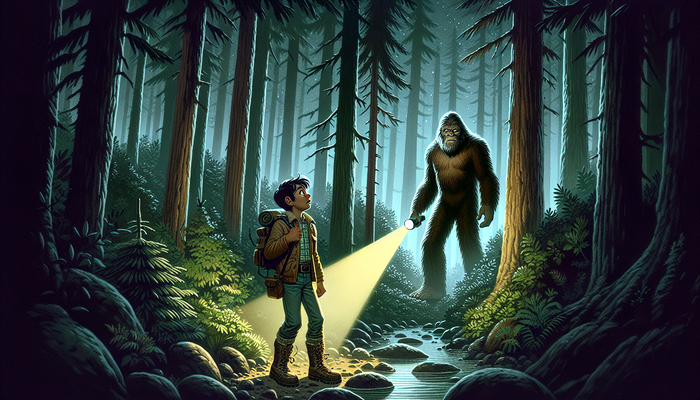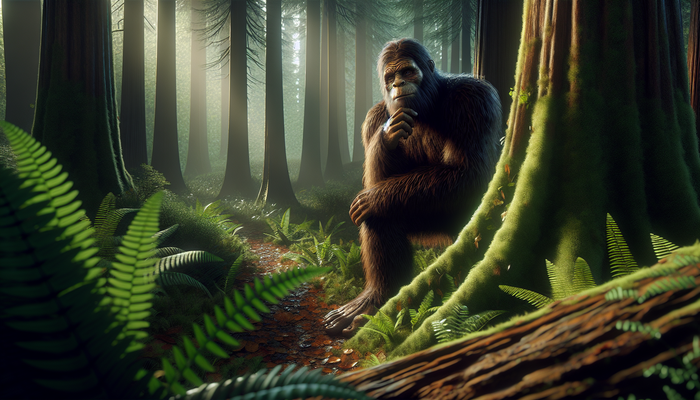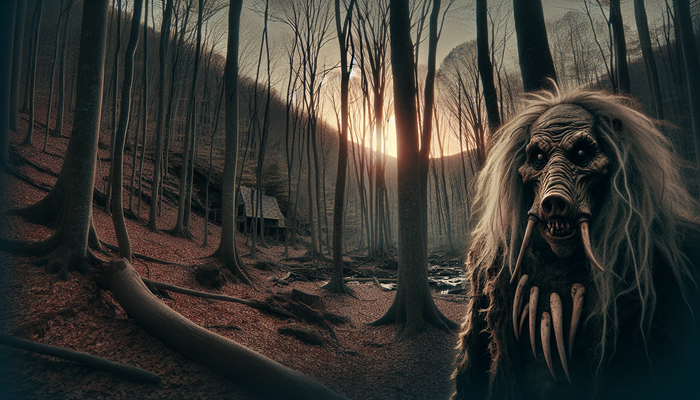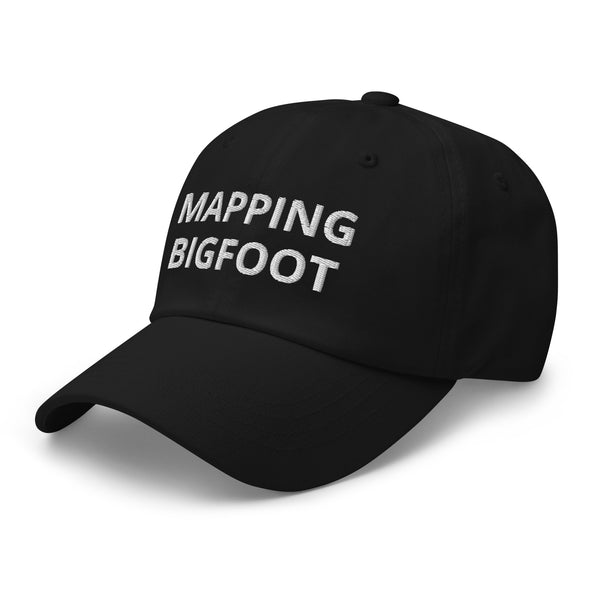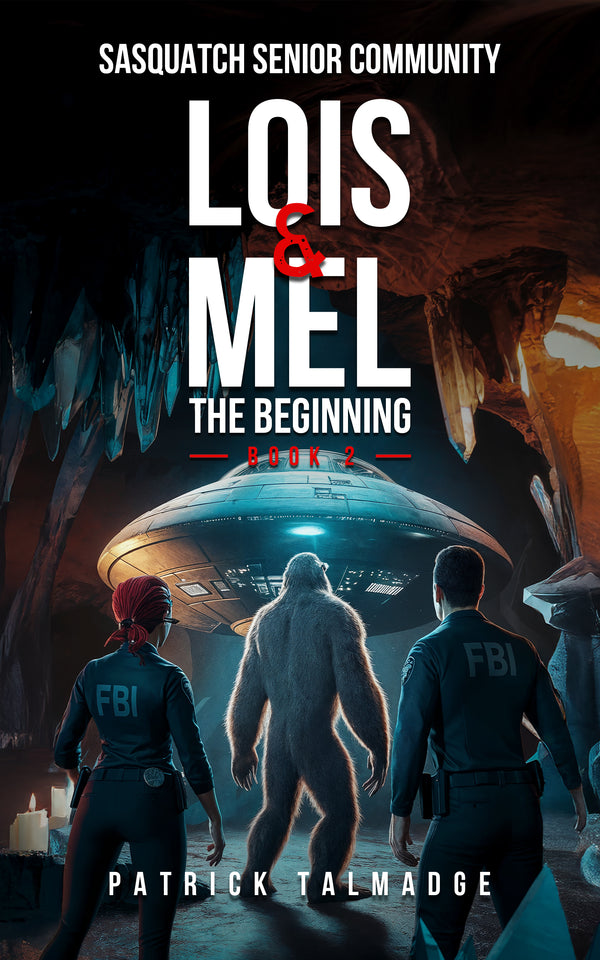Your Ultimate Guide to Becoming a Cryptozoologist

By Jack Sullivan, Bigfoot Researcher
The allure of the unknown has captivated humankind since the dawn of civilization. Tales of mysterious creatures lurking in the shadows of the unexplored have sparked curiosity and wonder across cultures. From folkloric legends to fleeting eyewitness accounts, stories of enigmatic beings not yet acknowledged by science have inspired many to venture into the twilight fringes of discovery.
For those drawn to unraveling nature's secrets, the field of cryptozoology offers a gateway into a realm where mystery intersects with empirical inquiry. Cryptozoology centers on the search for and study of animals known as cryptids - creatures rumored or reported to exist but not yet verified by conventional scientific channels. Intriguing examples include Bigfoot, the Loch Ness Monster, the Yeti, and the Chupacabra.
While mainstream science may view cryptozoology with skepticism, those who have dedicated their lives to hunting cryptids are driven by a passion for exploration and a scientific mindset. The tools may be unconventional by academic standards, but the spirit of inquiry is one that seeks to push the boundaries of current knowledge through evidence-based investigation.
For any enthusiast eager to step into the shoes of a cryptozoologist, this guide promises to be the definitive roadmap. It will unveil everything you need to know to embark on an adventure that requires equal parts open-mindedness and critical thinking. This journey promises to be more than a mythical pursuit - it is a path of discovering yourself as a modern explorer seeking to shine light on the unknown.
So come along for an excursion into a realm where folklore and science converge. The shadows beckon - it is time to take the first steps toward revealing their secrets. The mysteries of nature's undiscovered cryptids await, and your quest as a cryptozoologist begins here.
The World of Cryptozoology
As a child growing up in the dense forests of the Pacific Northwest, the tales of Bigfoot captured my imagination. The giant, hairy hominid was a figure of fascination and fear, a creature that evoked both curiosity and caution. Even as an adult, glimpses of unidentified shadows between the towering pines still elicit a chill down my spine.
Such is the enigma of cryptozoology - the study of hidden animals that lurks in the boundary between legend and reality. Deriving its name from the Greek words kryptos ("hidden") and zoologia ("study of animals"), cryptozoology deals with creatures that have often been relegated to myth and folklore. The famous Scottish lake monster Nessie, the elusive snow leopard of the Himalayas known as the Yeti, and the blood-sucking goat killer - the Chupacabra - are all examples of such mysterious entities referred to as cryptids.
While tales of fantastic beasts have existed for millennia, cryptozoology as a field of study emerged in the 1950s through the work of French-Belgian zoologist Bernard Heuvelmans. Heuvelmans coined the term cryptozoology in his 1955 book On the Track of Unknown Animals, which documented his analysis of numerous cryptids. The book laid the groundwork for scientifically evaluating evidence of creatures outside the scope of established zoology.
Since then, the discipline has evolved through the contributions of researchers like Karl Shuker, Loren Coleman, and Grover Krantz. Their work demonstrates that cryptozoology, when practiced systematically, can uncover new species even in well-explored regions. The discovery of the Vu Quang ox in Vietnam in 1993 and the saola antelope in 1992 validate this potential.
Mainstream science may view the field with skepticism, but history has proven that even the most implausible tales can sometimes reveal a grain of truth. The platypus, komodo dragon, okapi, and giant squid were all once considered fantastical creatures before eventually being accepted as real species. Who knows what seemingly bizarre cryptids may one day step out of the shadows? As a cryptozoologist, I am driven by the possibility of making the next game-changing discovery.
The path promises to be challenging yet fulfilling. Now let's delve deeper into the essence of cryptozoology and the creatures that have captivated the human imagination across cultures. It's time to pierce the veil of myth and determine what may actually be lurking in the unexplored wilds of our world.
Charting the Unconventional Path
When I first became fascinated with the possibility of Bigfoot as a teenager, I naturally assumed there must be an academic path to becoming a cryptozoologist. Perhaps a "Cryptozoology 101" course that would provide all the basics or even a university degree program dedicated to the field. But I soon discovered that charting a course into the world of cryptozoology requires a different approach compared to mainstream scientific disciplines.
There are no straightforward qualifications or universally accepted principles for becoming a cryptozoologist. No accrediting bodies that bestow licenses to those deemed fit to carry the mantle. No university degree programs focused specifically on the study of cryptids. The journey is one of passion, self-motivation, and a thirst for unraveling mysteries through creative exploration.
In essence, cryptozoology lies in the realm of fringe science. It deals with subjects that many academics dismiss as pseudoscience or flights of fancy. Yet history has shown us that yesterday's fringe can become tomorrow's foundation if dedicated researchers are willing to pursue unconventional paths with diligence and integrity.
That is not to say one can or should venture into cryptozoology without scientific rigor or grounding. A solid base of knowledge in related disciplines such as zoology, biology, ecology, anthropology, or paleontology is invaluable. Immerse yourself in the principles of scientific inquiry - formulating hypotheses, gathering evidence, conducting controlled experiments. Build your capacity for analytical thinking and objective evaluation.
Such foundations, even if not specific to cryptozoology, will equip you with crucial skills for documenting and analyzing sightings, interpreting folkloric accounts, and investigating cryptids in the field. They will bolster your credibility and growth as a researcher.
You can also draw from related fields such as archaeology, genetics, wildlife conservation, geography, psychology, and forensics. Cryptozoology, by its interdisciplinary nature, stands to gain insights from diverse domains of knowledge. Let your interests guide you toward crafting your own unique skill set tailored to the kind of cryptids you wish to investigate.
Most importantly, recognize that the path to becoming a cryptozoologist requires creativity and the courage to step off the beaten trail. Be open to learning from unconventional sources - local eyewitness accounts, indigenous traditions, even legends and folklore. Maintain rigor but don't let the limits of current science blind you to possibilities.
Who knows - that unique blend of passion and knowledge could lead you to shine light on a creature or discovery that redefines what we know about the natural world. Be open to where the journey takes you.
The Cryptozoologist's Toolkit
As a teenager, I spent countless weekends camping in the mountainous forests near my home, hoping to catch a glimpse of the elusive Bigfoot said to roam the region. Armed with little more than a basic tent, binoculars, and a dog-eared copy of a Bigfoot field guide, I was woefully unprepared for any serious cryptozoological investigation. But those early forays taught me how much knowledge and skill is required to conduct research into mysterious creatures.
Any enthusiast eager to venture into cryptozoology as more than just a casual hobby needs to equip themselves with some essential tools of the trade. While cryptozoology requires flexibility and open-mindedness, it also demands rigor, analysis, and systematic fieldwork. Let's look at some key components that will prepare you for the reality of chasing down elusive cryptids.
Critical Thinking Skills
A sharp, analytical mind is a cryptozoologist's greatest asset. As researchers, we deal with evidence that is often anecdotal, fragmentary, and ambiguous. Eyewitness accounts can be unreliable or tainted by preconceived notions. Photos and videos can be easily faked or misinterpreted. Even physical traces like footprints have multiple plausible explanations. To navigate this maze, you need to be an astute critical thinker - questioning assumptions, identifying logical fallacies, and avoiding confirmation bias. Sharpening your mental toolkit will help you separate dubious claims from potential breakthroughs.
Fieldwork Proficiency
Direct field observation and investigation are where the rubber meets the road in cryptozoology. It's one thing to theorize from the comfort of your armchair, quite another to gather tangible evidence from the habitat of an alleged cryptid. Learn skills like tracking, casting footprints, forensic data collection and sample analysis, wilderness navigation, and survival techniques. Know how to utilize trail cameras, drones, night vision equipment, and other technological aids. Immerse yourself in the environment of your target cryptid. The more proficient you are in the field, the greater your chances of success.
Scientific Knowledge
Draw on knowledge from zoology, biology, ecology, animal behavior studies, and genetics to inform your perspective. Understand scientific principles about biodiversity, evolution, adaptation, and biogeography. This will help you evaluate the plausibility of a cryptid's existence in a given habitat and its life traits. Separate unrealistic flights of fancy from more credible hypotheses grounded in science.
Anthropological Insights
Since many cryptids originate from folkloric tales, insights from anthropology and sociology can be invaluable. Study local cultures, traditions, belief systems, and oral histories to identify recurring themes or clues about unknown creatures. Social sciences reveal the human contexts in which cryptid accounts are embedded.
Analytical Skills
Objectively analyzing collected data is the key to making sense of disparate and fragmentary information. Hone skills like inductive reasoning, deductive logic, statistical analysis, and data modeling to recognize meaningful patterns and test correlations. Develop the patience and meticulousness to comb through details seeking potential breakthroughs.
Technological Proficiency
Leverage technology to enhance your investigations - remote camera traps, drones, mapping software, statistical analysis programs, forensic data extraction tools, and more. Keep current on innovative techniques for gathering, processing and integrating information. But also recognize the value of primitive skills - observation, tracking, bushcraft. Find the right blend of high-tech and low-tech.
Open-Minded Skepticism
Approach the subject with curiosity but also rigorous skepticism. Be open to new evidence but also question it relentlessly. Neither outright rejection nor blind acceptance serves the spirit of scientific inquiry. Let facts and proof guide your conclusions, not preconceived biases.
The more you build up these knowledge areas and skill sets, the more equipped you will be to conduct rigorous cryptozoological research. It's an ongoing process of growth and learning. But the journey promises to be an adventure every step of the way.
Venturing into the Field
As a teenager, my first attempts to search for evidence of Bigfoot involved aimless wanderings through the dense forests near my home. I had enthusiasm but lacked methodology. Over the years, I've learned that venturing into the field requires meticulous preparation, research, and systematic execution. Let's look at some key steps:
Understand the Cryptid
Before heading into the wilderness, extensively research the cryptid you're pursuing. Gather accounts of sightings, reported behaviors, preferred habitats, diet, movement patterns, physical traces, and any other details that might inform your search. Compile a profile of what to potentially expect based on the existing body of knowledge.
Study the Habitat
Become intimately familiar with the terrain, ecology, climate, and biodiversity of the region you plan to investigate. Understand factors that might sustain or deter the cryptid's presence. Identify locations with the highest probability of activity based on key needs like food sources, shelter, and isolation. Prepare accordingly.
Engage Local Communities
Connect with indigenous communities and long-time local residents to gather first-hand eyewitness accounts, learn about historical sightings, and separate facts from possible exaggerations. Local knowledge can provide clues unknown to mainstream science. But balance it with your own analysis.
Obtain Permits and Authorizations
Get legal access to both public and private land through required permits and permissions. Adhere to regulations regarding protected areas or archaeological sites. Cryptozoological research must not impact fragile ecosystems. Transparency and compliance build trust with authorities and the local populace.
Use Technology Strategically
Employ camera traps, drones, night vision devices, and other technology to maximize the effectiveness of your search. But recognize their limitations in remote terrain. Don't let gadgets replace tried-and-tested fieldcraft. Use technology to complement your ground work, not substitute it.
Follow Scientific Protocols
Adhere to scientific data gathering, sample collection, documentation, and analytical protocols to ensure the integrity of your research. Carefully catalog any physical traces or evidence, maintaining chain of custody. Follow biology and anthropology field research best practices.
Safety is Paramount
Meticulously plan for safety - supplies, contingency plans, emergency support, survival skills. Monitor weather forecasts diligently. Never take unnecessary risks or push beyond your physical limits. No finding is worth compromising your well-being.
Patience Is Key
Accept that results may take multiple expeditions over months or years. Don't get discouraged by initial failures. Persist with a systematic approach. Many discoveries came after years of painstaking fieldwork. Stay motivated but realistic.
By blending passion with rigor, preparation with perseverance, and high-tech tools with low-tech bushcraft, your field investigations will have the best chances of yielding tangible breakthroughs. And regardless of the outcome, the spirit of adventure and discovery will make the expedition rewarding.
Navigating the Realm of Skepticism and Belief
During my first presentation on Bigfoot at a local cryptozoology club meeting, I was taken aback by the fiery responses from both ardent believers and die-hard skeptics. I quickly realized that navigating the divide between open-mindedness and critical skepticism was far more challenging than trekking through the remote mountain forests in search of the elusive creature.
Cryptozoology, by its very nature, deals with subjects that blur the lines between reality and imagination. Some cryptids have achieved celebrity status in popular culture, such as Nessie, the Yeti, and the chupacabra. But the scientific evidence for their existence is often limited or ambiguous at best. Tales of these creatures are frequently dismissed as fantasy or superstition by conventional science.
However, the history of zoology is also filled with discoveries that were once derided before ultimately being accepted into the scientific fold - the platypus being a case in point. Prematurely rejecting the possibility of cryptids risks closing ourselves off to the wonders still hidden in nature. But uncritically accepting every anecdotal account as gospel also leads us astray. As cryptozoologists, how do we walk this tightrope effectively?
Firstly, recognize that concrete proof is the currency of science. Anecdotes, eyewitness accounts, indigenous legends - while important clues - do not constitute irrefutable evidence. Even photos and videos can be hoaxed. Empirical, verifiable data carefully documented and analyzed is key. Resist the urge to jump to conclusions and avoid confirmation bias by rigorously vetting all evidence.
Secondly, don't dismiss local and indigenous knowledge systems, but do view them critically. Such narratives can offer insights unknown to mainstream science but may also be embellished over generations. Look for recurrent themes that align with ecological factors and known species distributions. Be open but discerning.
Additionally, collaborate with experts across domains - biologists, anthropologists, geologists, and forensic scientists - to leverage their specialized knowledge. A multidisciplinary approach improves the quality of investigation and offsets individual biases.
Finally, recognize that the absence of evidence is not necessarily evidence of absence. History has shown that rare species can elude detection for decades by occupying remote niches or possessing elusive traits and behaviors. Avoid definitive verdicts without comprehensive data.
Forging your own path between skepticism and belief is key to staying objective. Ultimately, let a passion for facts guide your explorations, not just faith in the fantastic. Maintain balance on the razor's edge.
From Bigfoot to UFOs: Hangar 1 Publishing Has You Covered!
Explore Untold Stories: Venture into the world of UFOs, cryptids, Bigfoot, and beyond. Every story is a journey into the extraordinary.
Immersive Book Technology: Experience real videos, sights, and sounds within our books. Its not just reading; its an adventure.


